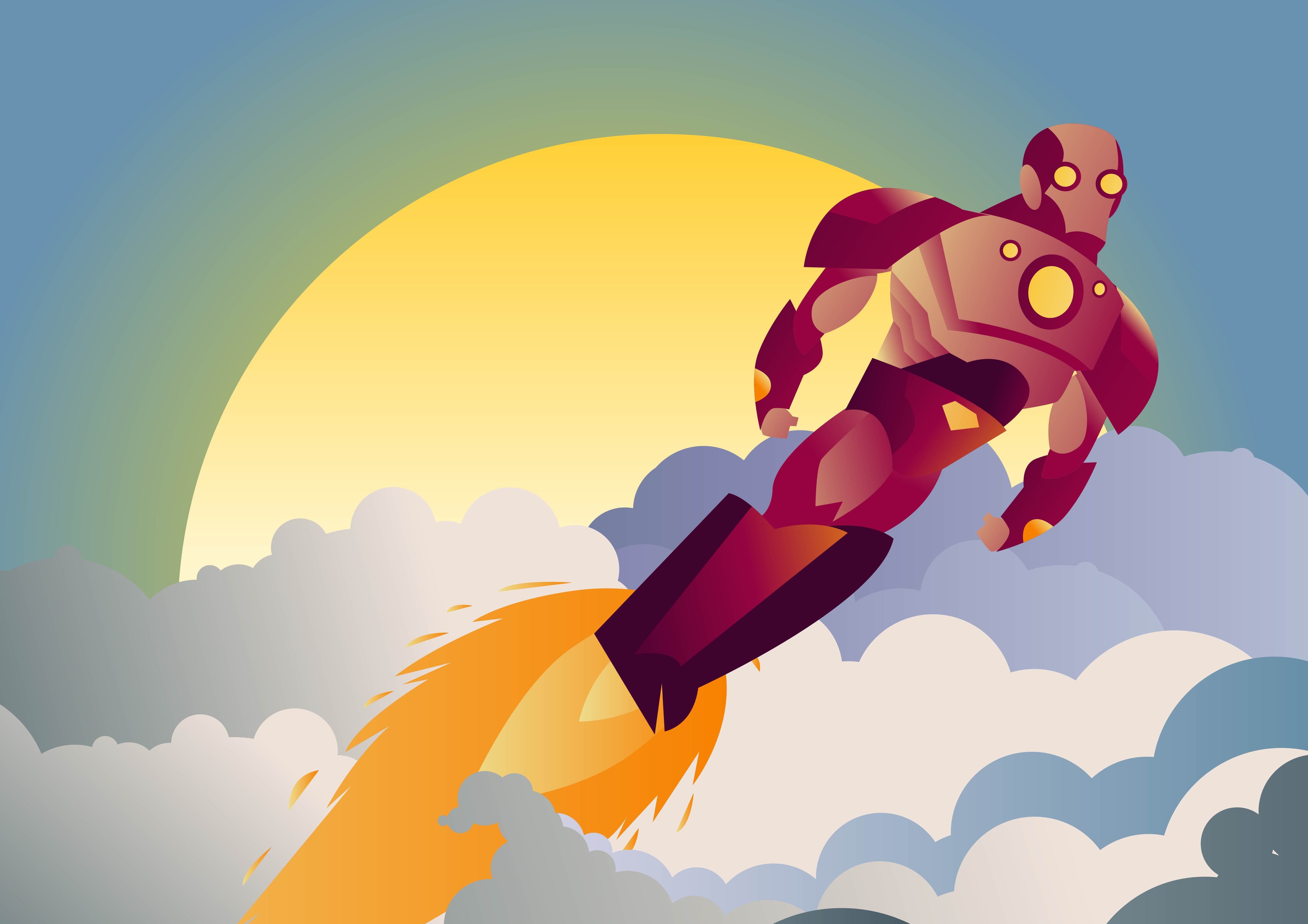Joseph Byrum is chief data scientist at Principal Financial Group, an investment management group based in Des Moines, Iowa. Byrum joined Principal after 11 years at Syngenta, most recently in a senior global product development, innovation, and delivery role. He is a regular contributor to AgFunderNews; you can find his previous posts here. Connect with him on Twitter @ByrumJoseph.
Marvel’s Iron Man suit might seem an unlikely source of inspiration for growers. Once the otherwise ordinary engineer Tony Stark puts on the suit, he gains all of the powers of a true superhero. At the heart of these capabilities is an integrated artificial intelligence (AI) system called Jarvis, which stands for Just A Rather Very Intelligent System. In later sequels, an upgraded AI called Friday takes over.
In addition to running the Stark household, Jarvis manages the functions of Iron Man’s suit in a way that allows the person wearing it to say what he needs, leaving it to the AI to figure out how best to make it happen. The Iron Man movies offer a vision of the future with intelligent augmentation.
More commonly, we see self-driving cars held out as the exemplar of where AI is headed. After all, autonomous vehicles can already provide impressive demonstrations of their capabilities, despite occasional bugs and setbacks that will be sorted out over time. Under this model of AI technology, the machine takes over, and the human is just along for the ride. This is also the AI model found in other works of science fiction that feature machines with a serious case of megalomania and a desire to destroy now-useless humanity.
That’s another reason to favor the Iron Man model. It shows us that it is possible to combine man and machine in a way that allows both to achieve more together than they could apart. This is the model that can truly take agriculture into the next era of productivity.
Before considering how such a thing would play out in the fields, it might be easier to consider a simpler example from the world of finance, where the role of computers is more obvious. At the most fundamental level, all computers do is perform trillions of mathematical calculations every second. This level of calculating power means a financial risk forecast can be completed in an instant. In the past, you’d need a room full of people armed with slide rules—and a few hours—to perform an equivalent analysis. The speed and accuracy of the modern calculations bring the information to the analyst in real-time. That’s a massive advantage—and also a liability.
When all possible comparisons, calculations and mathematical representations of what’s happening are available to the analyst in real time, it’s overwhelming. Say a financial analyst wants to place a bet on the commodity most likely to provide the best return over the next year. Which indicator matters most? Global supply levels, inflation, economic growth, the demand curve, weather patterns, transportation costs and so on? There are too many potentially relevant factors to sort through.
Smart algorithms use machine learning to process current and historical data to identify patterns and detect the signals from market trades. Such algorithms can indicate the statistical probability that future commodity prices will reach various levels. The human analyst can then examine this top-line information and decide where to invest.
In the past, such decisions were based perhaps on taking a look at a few key metrics and relying on intuition. Luck was really the number one factor for success. Now, thanks to augmented intelligence, such decisions can be made based on a weighing of calculated probabilities. This is the only super suit an investor needs.
The same is true for growers.
Individual farmers obviously can’t afford to employ a room full of human calculators and agricultural specialists, so they do the next best thing. They rent expertise, and this is a model that does work. The right seed advisors can work wonders.
But what if individual farmers could own that expertise, and put it in their pocket? It would be like their own personal Jarvis telling them what needs to be done to maximize the chance of having a good harvest.
Augmented intelligence places the specialized knowledge of the best agronomists at the fingertips of the individual farmer. Instead of being dependent on intermediaries like co-ops and seed vendors for critical advice about what to plant and when growers can implement farmer-centric intelligent solutions without the middlemen.
The role of AI begins with the choice of the ideal seed for the specific needs of the soil and expected weather conditions. Instead of just choosing last year’s best performing seed, using the seeds recommended by data analytics would save soybean farmers $10 per bushel, according to experiments conducted with Syngenta’s advanced seed placement analytics tools.
The futuristic AI solution would similarly absorb all available field data, model every possible growing scenario, and identify the course of action likely to produce the highest yields. AI algorithms would then program field equipment to deploy just the right amount of inputs to a farmer’s field, drastically reducing run-off and waste, saving money and maximizing return on investment.
With access to historical growing data and inputs from real-time sensors, the AI’s ability to monitor conditions 24/7 means problems can be flagged early and resolved before they become crises.
Many elements of agricultural AI are already available but, as with autonomous vehicles, we’re still in the early stages. It will take time to refine augmented intelligence systems for agriculture so that they are readily accessible and fit in the pocket. Such a tool could never be as cool as an armored suit that can fly, but the ability to outperform the competition through science is the only superpower most farmers will ever need.




